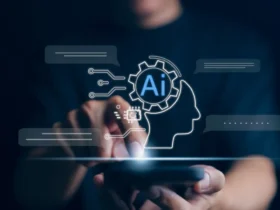Reinforcement learning (RL) has rapidly emerged as one of the most transformative branches of AI research. Its ability to solve complex problems and optimise processes through continuous learning has made it a powerful tool for businesses eager to sharpen their competitive edge. But how exactly does reinforcement learning work? And what are the most promising ways businesses are leveraging this cutting-edge technology?
Continue reading to explore the fundamentals of RL and its real-world applications as part of AI company strategies.
What is Reinforcement Learning?
At its core, reinforcement learning is a type of machine learning in which an agent (the AI system) learns by interacting with an environment and receiving feedback in the form of rewards or penalties. Think of it as a virtual trial-and-error process, much like how a child learns from experience. Instead of spoon-fed labelled data, the agent learns autonomously by making decisions, observing the outcomes, and adjusting its strategies to maximise the long-term reward.
The key components of reinforcement learning are:
- Agent: The decision-maker.
- Environment: The world in which the agent operates.
- State: The current situation or condition of the environment.
- Action: The decision or choice made by the agent.
- Reward: Feedback that the agent receives based on its actions.
The agent’s goal is to develop a strategy that maximises its cumulative reward over time, allowing it to handle increasingly complex tasks with greater proficiency. Unlike traditional supervised learning, which relies heavily on historical data, RL is dynamic and adaptive, making it ideal for real-time problem-solving.
How Businesses Are Harnessing Reinforcement Learning
Reinforcement learning is being adopted across industries to solve complex problems that traditional algorithms struggle to address. Here are some of the most compelling applications:
- Energy Optimisation
Data centres worldwide are leveraging RL to optimise energy consumption. By dynamically adjusting cooling systems and managing workload distribution, companies can slash energy costs while maintaining optimal performance.
- Supply Chain Management
The logistics and supply chain sector, often mired in complexity, is reaping the benefits of RL. From inventory management to route optimisation, RL-driven systems can adapt to real-time changes, making them invaluable in unpredictable market conditions.
- Financial Trading
The world of finance is embracing RL to develop adaptive trading strategies that respond to fluctuating market conditions. These algorithms can autonomously learn to optimise trades, outperforming traditional methods in certain scenarios by identifying patterns that human traders might overlook.
- Personalised Recommendations
E-commerce platforms like Amazon have turned to RL to provide dynamic, personalised product recommendations. By learning from customer behaviours, RL-powered systems can predict and recommend products tailored to individual preferences, improving customer satisfaction and sales.
- Autonomous Vehicles
The development of self-driving cars sometimes uses RL alongside a mix of varied learning algorithms. By collecting information about navigating complex traffic scenarios and obstacles, RL helps autonomous vehicles make safer and more efficient decisions on the road.
- Manufacturing Process Optimisation
In the manufacturing world, RL is changing production. RL-driven systems optimise production efficiency, reduce waste, and minimise defects by monitoring and adjusting parameters in real-time.
- Customer Service Automation
Chatbots and virtual assistants powered by RL can learn to improve over time. By handling customer queries with increasing sophistication, RL-based systems are driving more seamless interactions, reducing the need for human intervention.
- Robotics
Robots in industries like manufacturing and warehousing are becoming more capable thanks to RL. These systems can learn to perform increasingly complex tasks with high precision, enhancing operational efficiency and reducing costs.
Gain a competitive advantage with reinforcement learning
Reinforcement learning is more than just an academic curiosity—it’s a business game-changer. Its ability to learn, adapt, and optimise processes in real-time means companies adopting RL are better equipped to tackle complex challenges and outpace competitors.
As the field of artificial intelligence continues to evolve, the potential applications of RL in business will only expand, pushing the boundaries of what is possible. Stay ahead in an increasingly AI-driven world by learning more about reinforcement learning and your industry today.








Leave a Reply